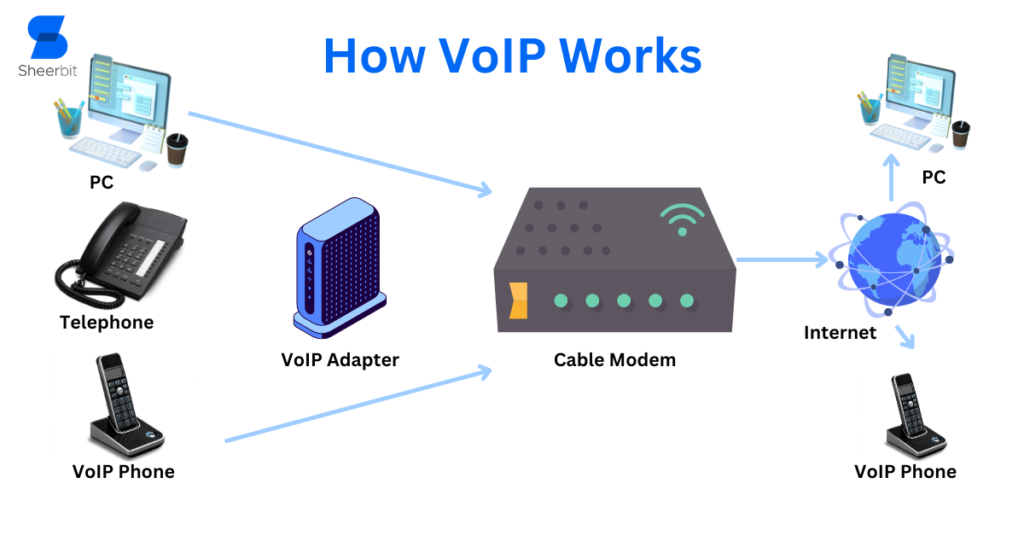VoIP Phone System have become essential in contemporary corporate communication, transforming how businesses communicate and work together. VoIP systems are unmatched in flexibility, affordability, and feature diversity regarding voice data transmission via the Internet. These attributes are complex for traditional phone systems to match. VoIP systems enable organizations to improve productivity and simplify communication. Features like intelligent call routing and seamless interaction with other digital tools.
But realizing the full potential of VoIP technology calls for more than just appreciating its advantages. It takes careful planning, strategic execution, and uncompromising attention to detail to establish a VoIP phone system. Everything from determining network capacity to optimizing security settings has to be well thought out to guarantee the system integrates smoothly and performs at its best inside your company. In this extensive tutorial, we’ll go over 15 essential stages to help you understand the ins and outs of developing a VoIP phone system and take full advantage of this game-changing technology.

1. Define Your Requirements
Clearly define your company’s needs and goals for the VoIP phone system before you start developing. Scalability, feature set, budgetary restrictions, and interoperability with current software are a few things to consider.
2. Conduct a Network Assessment
Make sure your current network infrastructure can handle VoIP traffic without sacrificing data integrity or call quality by evaluating it. During implementation, deal with any possible bottlenecks or latency problems.
3. Choose the Right VoIP Provider
Choose a trustworthy VoIP service provider that understands your company’s demands and can deliver consistent uptime, first-rate customer assistance, and strong security measures.
4. Design a User-Friendly Interface
Make the user experience a priority by creating an easy-to-use interface that enables staff members to quickly access all of the VoIP system’s functions.
5. Implement Quality of Service (QoS) Measures
To ensure constant call quality and minimize delay, use Quality of Service settings to prioritize VoIP traffic over other network operations.
6. Ensure Security Measures
Put strict security measures into place to protect yourself from risks like unauthorized access, data breaches, and denial-of-service (DoS) attacks.
7. Integrate with Existing Systems
Integrate the VoIP phone system with your company’s software programs, like email clients, productivity tools, and CRM platforms.
8. Customize Call Routing Rules
To maximize call handling and guarantee adequate communication flow, define specific call routing rules depending on variables like the time of day, caller ID, and user availability.
9. Enable Mobile Accessibility
Enable employees to stay connected from any location by providing mobile access to the VoIP system via specialized applications or web-based interfaces. This will facilitate remote communication.
10. Conduct Comprehensive Testing
Before deploying the VoIP phone system, thoroughly test it with various user profiles and situations to find and fix any possible problems or performance bottlenecks.
11. Provide Training and Support
Provide training courses to teach staff members how to use the VoIP system efficiently and offer continuing technical assistance to handle queries or issues.
12. Monitor Performance Metrics
To enable proactive troubleshooting and optimization, employ monitoring tools to measure essential performance parameters, including call quality, uptime, and customer happiness.
13. Implement Scalability Options
Scalability should be considered while designing the VoIP phone system to enable simple expansion to meet expanding user and corporate requirements.
14. Stay Updated with Technology Trends
Ensure your system stays competitive and utilizes the newest advances by staying updated with evolving technologies and trends in the VoIP sector.
15. Continuously Improve and Adapt
To better meet changing business requirements, iteratively update the VoIP phone system by gathering input from users and stakeholders and identifying areas for improvement.
Conclusion
In conclusion, careful planning, execution, and continuous maintenance are necessary to establish a VoIP phone system to provide your company with a flawless communication experience. You may confidently manage the challenges of VoIP development and realize the full potential of contemporary corporate communication by adhering to these 15 crucial measures.
Are you prepared to completely transform your company’s communication infrastructure using a VoIP phone system? Make the initial move towards increased productivity and connectedness by contacting us today to learn more about our tailored solutions.
Contact us to explore your requirements for developing a VoIP phone system and to use contemporary communication technologies fully! Recall that in today’s fast-paced corporate environment, successful communication is essential. Use VoIP’s potential to help your company become more productive, collaborative, and expand.





